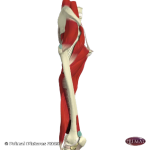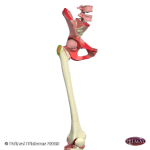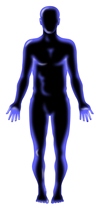Trochanteric Bursitis
Lateral Hip Pain
What is it?
Trochanteric bursitis refers to irritation and inflammation of the bursa located between the point of the hip (trochanter) and the overlying gluteal muscles. Some recent evidence suggests that the tendons of the gluteal muscles may actually be the main structures involved with lateral hip pain and it is these tendons that become irritated and are the source of lateral hip pain. The term, ‘trochanteric bursitis’ is still commonly used to describe this injury.
The pathological process occurs when there is excess friction of the bursa and/or gluteal tendons. This is caused by excess tightness in the gluteal muscles and poor biomechanics in the pelvis, hip and lumbar region. Often this can be related to faulty foot biomechanics which causes an overload or compensation in the lower limb. The adverse movement and muscle tightness results in increased friction of the bursa and tendons which results in microtrauma, which over time results in inflammation and pain.
How does it feel?
Trochenteric bursitis results in pain on the outside of the hip. In some instances the pain can radiate down the outside of the thigh towards the knee. The pain may be aggravated by activities involving lots of hip movement such as walking, running, climbing stairs, crossing your legs and getting in and out of the car. The outside of the hip may also be tender to touch and can feel warm.
What should you do?
If you suspect you have trochanteric bursitis you should avoid the activities that aggravate it and contact a musculoskeletal or sports specialist Chartered Physiotherapist. Your physiotherapist will be able to confirm diagnosis and help determine the cause of the problem. Without determining the cause, the problem may ease with rest only to return when you resume your normal activities.
What shouldn’t you do?
You shouldn’t ignore the problem and continue with aggravating activities. This will increase the severity of the problem and may delay your recovery.
Are there any long-term effects?
If managed appropriately and causative factors are addressed, trochanteric bursitis does not produce any long-term effects.
Management
In the first instance a Chartered Physiotherapist will be able to assist you in the assessment of trochanteric bursitis and begin to address the cause behind the problem. Treatment may include soft-tissue release techniques including trigger point release to help reduce the tightness in the gluteal muscles.
You may also be given a programme of exercises to follow which can include stretches and some exercises to improve your biomechanics. If it is felt that your feet may be a contributing factor then referral to podiatry for orthotic insoles may be indicated.
Before attending a physiotherapist you can get started with some treatment of your own by using ice massage on the point of pain.
This can be done by filling a paper/polystyrene cup with water, freezing it, and using the exposed end to massage on the outside of the hip for 5-10min or until numb. **Please make sure you keep the ice moving to avoid an ice burn**
This process can be repeated 2-3 times per day and for 3-5 days which will assist in reducing the irritation and allowing you to progress with your rehabilitation.
Disclaimer: This information is not a substitute for medical advice and you should seek professional advice from a doctor, physiotherapist or other healthcare professional.






